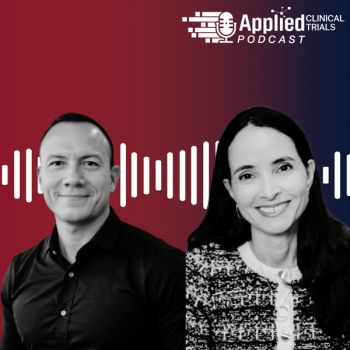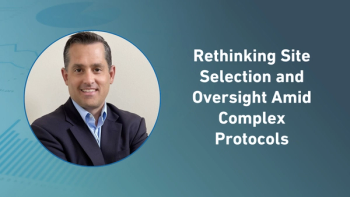
Applied Clinical Trials Supplements
- Supplements-04-02-2005
- Volume 0
- Issue 0
CRA Discipline Time and Effort Study: Children's Oncology Group
The aim of the study was to collect information from all individuals who assisted with COG CRA functions.
The Clinical Research Associate (CRA) Discipline of the Children's Oncology Group (COG) comprises CRAs from approximately 235 institutions throughout North America, Switzerland, Australia, and New Zealand. COG was formed by a merger of the former pediatric cancer trial groups Children's Cancer Group, Pediatric Oncology Group, National Wilms Tumor Study Group, and Intergroup Rhabdomyosarcoma Study Group. This merger afforded the combined CRA Discipline an opportunity to assess job responsibilities in the form of a time and effort survey.
Table 1. Survey categories
The purpose of the time and effort survey was to determine what percentage of time the institutional CRA spends on different tasks within an academic institution. This would better identify the number of personnel needed to facilitate COG clinical trial research. A second purpose was to use the results to assist in writing the first COG CRA Discipline grant to secure NCI funding of the CRA Discipline to support discipline education and research endeavors.
Background
It is well established that patients using therapeutic clinical trials in an academic setting contribute to improvements in clinical outcomes over time.
1-4
This important clinical trial process must be facilitated.
The CRAs of the COG transition team, made up of the CRA leadership of four pediatric groups, formed a task force to determine time and effort devoted to clinical trial management and facilitation. The task force first identified appropriate duty categories and outlined these in a document titled "Requirements for a Cooperative Group Clinical Research Office." The COG executive committee vetted and approved this document, which delineates the tasks that must be accomplished for a site to manage clinical trials in COG. It further delineated tasks recommended to be handled by a certified CRA (CCRP).
Table 2. Survey task definitions for "Research" category
To assure all eligible pediatric cancer patients are registered on trials, CRAs at each COG member institution perform several tasks to manage and facilitate clinical trials. To activate a study at a site, the institutional CRA must obtain local scientific and regulatory approval, examine resource utilization, and prepare institutional consent and assent forms, all according to federal and local guidelines and procedures. Once a study is activated, the CRA confirms subject eligibility, coordinates the consenting process, registers the subject, obtains and submits biologic specimens, and initiates data collection. While subjects are on study, the CRA assesses and reports toxicity and response data by multiple reporting periods, provides additional data at relapse, off-study, second malignancy and death, provides ongoing regulatory review including reporting of serious adverse events, and fulfils requirements such as serial biologic specimens, radiology films, and reports. When a subject completes protocol therapy, the CRA is forever responsible for follow-up data, documenting survival, significant events, and late effects. There are currently more than 45,000 patients in follow-up on more than 500 COG therapeutic studies.
Study methods
A survey was designed with the help of the Mayo Survey Research Center. The categories and tasks were drawn from the duty category document and divided into five components: administrative/coordination, research, consultation, education, and other. Each category was broken down further into task areas as indicated in Tables 1 through 5. Besides listing specific duty categories, the survey also evaluated demographic data about personnel and institutional function.
The CRA transition team undertook a pilot review of the time and effort survey over a two-week period to confirm that all major task categories were covered in the survey document, and to test the feasibility of the categorization.
Table 3. Survey task definitions for "Administrative" category
The sample included small, medium, and large institutions, with size based on average annual subject accrual to therapeutic studies. We determined that different sites would have different numbers and types of individuals facilitating clinical trials, some whose primary responsibility was COG trials and others whose contribution was unfunded by COG (e.g., lab technician assisting in specimen procurement or secretarial support for typing consents).
The aim was to collect information from all individuals who assisted with COG CRA functions, whether or not they were categorized as CRAs in the COG roster. As the total number of individuals undertaking CRA-type functions was unknown, eight surveys were sent to institutions that had 25 or more therapeutic enrollments in the previous year, and four surveys to those with less than 25 enrollments. A total of 2000 surveys were distributed. The survey copies were sent to the lead CRA at each site with instructions to distribute to anyone who assisted with CRA functions and tasks at the site.
The 235 institutions were divided into six groups alphabetically, and one group was surveyed each month of the six-month survey period. Individual CRAs were given the opportunity to select any continuous two-week segment in their survey month. The Mayo Survey Center facilitated survey distribution. Survey instructions were presented to the CRA Discipline at a semi-annual COG group meeting before distribution. Procedures also were described in articles in the monthly CRA bulletin, which was distributed to all CRAs. The survey included printed instructions, and three individuals from the original task force were identified as contacts for specific questions about the survey process.
Table 4. Survey task definitions for "Education" category
The survey was divided into 10 working days and further subdivided into hourly slots from 6 a.m. to 7 p.m. Respondents were asked to indicate different tasks they did within each hour. If there was more than one task, the total hour was divided equally by the number of tasks. We also thought that CRAs might not spend 100% of their time on COG cooperative group studies alone, participating in those sponsored by pharmaceutical companies, other cooperative groups, or investigator-initiated trials. Therefore, respondents were asked to delineate tasks as Cooperative (meaning COG) or non-Cooperative (all others). Demographic information included CRA experience, education, and type of facility in which they worked. Other information included number of subjects assessed and/or enrolled, and number of new protocols submitted to the institutional review board (IRB) or that required regulatory maintenance.
Results
Two hundred sixty-six surveys were returned. Six had no information for the task category questions and were eliminated from analysis. Two more had unrealistic answers, with an average of 15-19 tasks worked per hour per day, and these were similarly eliminated. Therefore, the data represents 258 respondents performing CRA-type functions. Of these 258 respondents, 77% identified themselves as CRAs.
More than 80% of respondents indicated they had college courses, an associate's degree, a bachelor's degree, or a master's degree. At the time of the survey, 66% of CRAs had been working as CRAs for more than three years. This is an important finding because the discipline offers full membership to those with two years' experience, the time at which they are believed to be fully qualified and able to contribute to the discipline. Equally important was that at the time of the survey one-third of respondents (individuals performing CRA functions) had less than two years' experience and thus were not eligible to obtain CCRP certification, a credential important for many CRA functions.
Figure 1. Clinical trial facilitation.
On average, respondents spent 75% of each day on COG trial facilitation and 25% on similar non-COG tasks (Figure 1).
For COG-related activity, overall daily task distribution expressed as a percentage of total time was determined for each individual and then averaged over 258 total CRAs. Adjusted for personal time, the following chart shows average daily CRA task distribution for COG work. Daily time by major categories was distributed as follows: research 64%, administrative 23%, consultation 4%, education 5%, and other 4%. A breakdown of each of these major categories is shown in Figure 2.
Discussion
The goal of this survey was to help identify the number of personnel needed to facilitate COG clinical trial research, and to portray duties conducted in the day and life of a CRA. A second goal was to use this information to write the first COG CRA discipline grant to secure funding for discipline education and research projects.
Figure 2. Average percent daily CRA co-op task distribution.
From our results we could not provide a mechanism to indicate how many CRAs would be required based on enrollment. We were able to determine that 0.06 subjects per institution per day were enrolled in clinical trials during the survey, or 23 subjects registered per year. We are not certain that funding the number of CRAs based on the number of registrations is appropriate. Many potential clinical trial subjects must be evaluated for each subject that is ultimately enrolled in the trial. For many of the therapeutic registrations, there are companion COG nontherapeutic studies that are not reflected in these numbers. In addition, many sites open protocols that close before an eligible subject is enrolled. The site must continue all regulatory aspects of studies, including annual renewals and amendment approvals, for as long as there is potential to enroll a subject. We concluded that it would be better to establish a formula based on tasks within each study rather than enrollments in order to better understand time and effort required to facilitate clinical trials.
It is interesting that the tasks for a certified CRA (CCRP), as recommended by the COG Executive Committee, include almost 100% of the tasks under the categories of Research, Education, and Consultation. These categories incorporate nearly 75% of the average daily tasks of the CRA survey respondents. To obtain certification, an individual must have worked in clinical trials for a minimum of two years. We found in this survey that at least one-third of respondents were not eligible for certification. This information is compelling to study backgrounds of CRAs (certification and education) and to correlate it with site performance. Such a study would assist sites in understanding the type of individual they require to appropriately facilitate and administer clinical trials.
The CRA Discipline received an excellent to outstanding rating from the NCI, thus receiving full funding for CRA education and research projects.
Table 5. Survey task definitions for "Consultation" category
It is imperative that sufficient staffing of appropriately trained individuals be available at all sites participating in clinical trials to ensure the integrity of research and the safety of participants.
Acknowledgements
This study was supported by a grant from the National Cancer Institute, Bethesda, MD, and was made possible through the commitment of the CRA transition team and CRAs at the participating institutions.
References
1. S.B. Murphy, "The National Impact of Clinical Cooperative Group Trials for Pediatric Cancer,"
Medical Pediatric Oncology
, 24 (5) 279-80 (1995).
2. H.P. Wagner et al., "Swiss Pediatric Oncology Group (SPOG): Childhood NHL in Switzerland: Incidence and Survival of 120 Study and 42 Non-Study Patients," Medical Pediatric Oncology, 24 (5) 281-286 (1995).
3. M.J. Coppes, M.L. Ritchey, G.J. D'Angio, "The Path to Progress in Medical Science: A Wilms Tumor Conspectus," Hematology/Oncology Clinics of North America, 9 (6) xiii-xviii (1995).
4. D.G. Tubergen and A. Bleyer, "The Leukemias" in Nelson Textbook of Pediatrics, 17th Ed., R. E. Behrman, R. M. Kliegman, H. B. Jenson, eds. (New York, NY, W.B. Saunders Co., 2003).
Susan Devine, CCRP, is CTSU manager at The Hospital for Sick Children, 555 University Ave., Toronto, ON, M5G1X8, (416) 813-8571, email:
Articles in this issue
over 20 years ago
Rescuing Drugs Through Personalized Medicineover 20 years ago
Recruiting Challenges in U.S. Oncology TrialsNewsletter
Stay current in clinical research with Applied Clinical Trials, providing expert insights, regulatory updates, and practical strategies for successful clinical trial design and execution.






.png)



.png)



.png)
.png)
